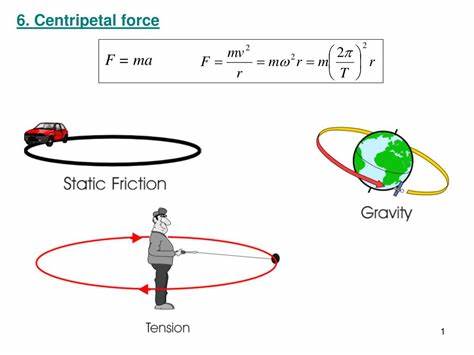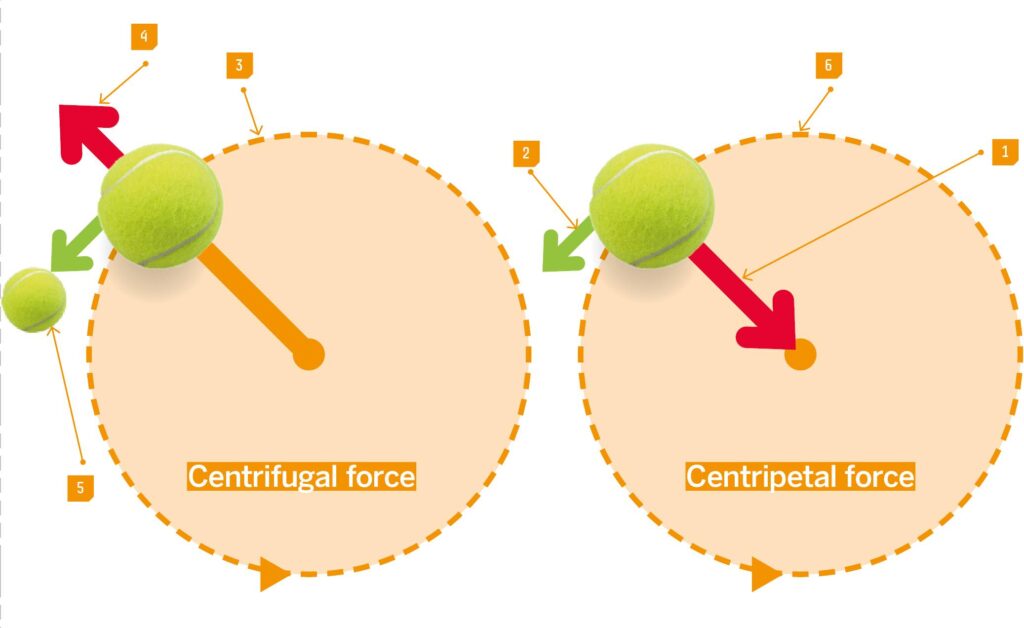Introduction
Centrifugal force refers to the apparent force that seems to push materials outward from the center of a spinning motion. In biology, especially in laboratory settings, the term centrifugal force comes up quite often. You may have heard of a centrifuge—a machine used to spin biological samples rapidly. This spinning helps separate components like blood cells, DNA, and proteins based on their densities.
But what is the science behind this spinning action? Why do heavier particles move outward and lighter ones stay closer to the center? What role do centrifugal and centripetal forces play in this?
In this guide, we’ll explore these questions deeply but in a way that’s clear, human, and rooted in biological understanding. Let’s begin by laying the foundation.
Table of Contents
1. What Is Centrifugal Force?
Definition

In biological systems and lab equipment, centrifugal force refers to the apparent force that seems to push materials outward from the center of a spinning motion. This force is not real in the traditional physical sense—it’s a pseudo-force or fictitious force.
It appears when we view things from a rotating frame of reference—like inside a spinning centrifuge tube.
In simple biological terms:
When you spin a tube full of blood in a centrifuge, you’ll notice that red blood cells collect at the bottom (toward the outer edge), while plasma stays at the top (closer to the center). The cells seem to be “pushed out” by the centrifugal force.
In reality, the centripetal force is pulling everything inward to keep it moving in a circle. What we experience or observe as outward motion is the result of inertia, or the tendency of objects to continue moving in a straight line.
2. Centripetal Force – The Real Force
To truly understand centrifugal force, we need to understand centripetal force, its real counterpart.
Definition

Centripetal force is the real physical force that pulls an object toward the center of a circular path. It is what keeps particles in a spinning tube from flying straight off.
In a centrifuge:
- The walls of the spinning tube exert the centripetal force.
- The particles, such as blood cells, try to move straight (due to inertia).
- This conflict creates the apparent outward push, or centrifugal force.
3. Difference Between Centrifugal and Centripetal Forces

| Feature | Centripetal Force | Centrifugal Force |
|---|---|---|
| Real or apparent | Real force | Apparent/fictitious force |
| Direction | Toward the center | Away from the center |
| Origin | Provided by tube wall or mechanical structure | Result of inertia in a rotating frame |
| Role in centrifugation | Keeps particles in circular path | Seems to “push” dense particles outward |
| Example in biology | Wall of centrifuge tube pulls sample inward | Cells appear to move outward during spin |
4. Principle Behind Centrifugal Force
The principle is based on Newton’s First Law of Motion: “A body in motion will stay in motion in a straight line unless acted upon by an external force.”
In a centrifuge:
- When the machine spins rapidly, everything inside wants to continue in a straight line.
- But the circular motion forces the sample to constantly change direction.
- This change is controlled by the tube walls (centripetal force).
- The sensation or effect of being “pushed” outward is what we call centrifugal force.
This principle allows scientists to separate mixtures based on density.
5. Mathematical Explanation
For biology students, it’s helpful to know the basic equation without getting too deep into physics: F=mv2/r
Where:
- F is the centrifugal force (same magnitude as centripetal force),
- m is the mass of the particle (e.g., a blood cell),
- v is the velocity of rotation,
- r is the distance from the center (radius).
This equation tells us:
- Heavier particles (greater m) experience stronger force.
- Faster spins (greater v) result in greater force.
- Wider radius (greater r) reduces the force slightly.
So, in centrifugation:
- Denser (heavier) particles move outward faster and settle first.
- Lighter components stay nearer the center or top.
6. Biological Examples of Centrifugal Force
Let’s explore how this concept applies to real-world biology:
A. Blood Separation
When a blood sample is centrifuged:
- Red blood cells (heaviest) move outward and settle at the bottom.
- White blood cells and platelets form a middle layer (called the “buffy coat”).
- Plasma (lightest) remains near the top.
This separation is crucial for:
- Blood analysis.
- Diagnosing diseases.
- Preparing plasma for therapies.
B. DNA Extraction
After breaking cells open, a centrifuge separates:
- DNA (heavier) from
- Proteins and lipids (lighter)
This process helps:
- Purify DNA.
- Prepare samples for PCR or sequencing.
C. Protein Isolation
Proteins vary in mass and density. Using differential centrifugation:
- Heavier protein complexes sediment first.
- Lighter proteins remain in solution longer.
This is useful for:
- Studying cell organelles.
- Extracting enzymes.
D. Cell Organelle Separation
Biologists use ultracentrifuges to separate organelles:
- Nuclei settle first (most dense).
- Then mitochondria, lysosomes, and ribosomes, in order of decreasing density.
This is fundamental in:
- Cell biology research.
- Biochemistry studies.
7. Centrifugal vs Centripetal in a Lab Context
Let’s compare them using a lab-based view:
| Situation | Centripetal Force | Centrifugal Force |
|---|---|---|
| Spinning sample in centrifuge | Provided by tube wall, keeps sample rotating | Makes heavier particles move outward |
| Sample sticking to tube wall | Wall pulls it inward | Particle resists and “feels” pushed outward |
| Separation of layers | Force acts to keep material in circular path | Layers move and settle due to outward effect |
8. Importance in Modern Biology
A. Diagnostic Medicine
Centrifugal principles help in:
- Blood testing.
- Hormone level detection.
- Pathogen identification (e.g., separating viral particles).
B. Molecular Biology
Essential for:
- Isolating nucleic acids (DNA, RNA).
- Studying gene expression.
- Performing electrophoresis after sample cleanup.
C. Biochemistry
Used for:
- Enzyme purification.
- Protein quantification.
- Analyzing molecular complexes.
D. Research and Biotechnology
Helps in:
- Preparing samples for microscopy.
- Studying bacteria, viruses, and organelles.
- Manufacturing vaccines and drugs.
9. Other Biological Concepts Involving Circular Motion
Though centrifugation is the most direct use, centrifugal concepts also play subtle roles in:
A. Plant Vascular Transport
- In tall trees, water must travel upward against gravity.
- While not strictly centrifugal, understanding pressure gradients and force balances helps in modeling transport systems.
B. Sperm Motility
- Sperm cells swim in spiral or helical paths.
- Understanding circular motion helps in analyzing how forces affect fertility and movement.
10. Common Misunderstandings
Myth 1: Centrifugal force is real
No—it’s an apparent force, useful for calculations and understanding motion, but it has no physical source.
Myth 2: The force causes separation
Not directly. Inertia and centripetal force are the actual players. Centrifugal force helps explain the observed effect in the rotating frame.
Myth 3: All particles move out equally
No—heavier or denser particles move farther out faster, which is why we can separate mixtures effectively.
11. Recap: Centrifugal and Centripetal Forces in Biology
Let’s review everything in a summary form:
| Concept | Centripetal Force | Centrifugal Force |
|---|---|---|
| Real? | Yes | No |
| Direction | Inward | Outward (apparent) |
| Who uses it? | Physics, biology labs | Biology (for explaining lab outcomes) |
| Key role | Keeps spinning particles in circular path | Helps explain separation in centrifugation |
| Examples | Tube wall, rotor | Particle motion in centrifuge, lab separation |
12. Conclusion
Understanding centrifugal force may seem like a topic for physicists, but for biologists and medical professionals, it is incredibly relevant. Whether separating blood components, isolating DNA, or preparing protein samples, centrifugal force (or more accurately, its effects) powers countless processes in labs around the world.
By grasping the interplay between centripetal (real) and centrifugal (apparent) forces, biology students gain deeper insight into the physical principles that support biological discoveries.
So next time you’re in a lab watching a centrifuge spin, remember—you’re seeing physics and biology dance together in perfect harmony.
FREQUENTLY ASKED QUESTIONS
What is centrifugal force ?
Centrifugal force refers to the apparent force that seems to push biological materials (like cells or proteins) outward when a sample is spun rapidly in a centrifuge. It’s not a real force but rather a result of inertia experienced in a rotating system.
Is centrifugal force a real force?
No, it’s not. Centrifugal force is a fictitious or pseudo-force. It doesn’t arise from any actual physical interaction like gravity or tension. Instead, it’s how we perceive the effects of inertia inside a rotating system.
What is ultracentrifugation?
Ultracentrifugation is a high-speed centrifugation method used to separate very small particles like:
Viruses
Ribosomes
DNA fragments
Protein complexes
It can spin up to 100,000 RPM or more, generating extremely high centrifugal forces.
Related Articles




